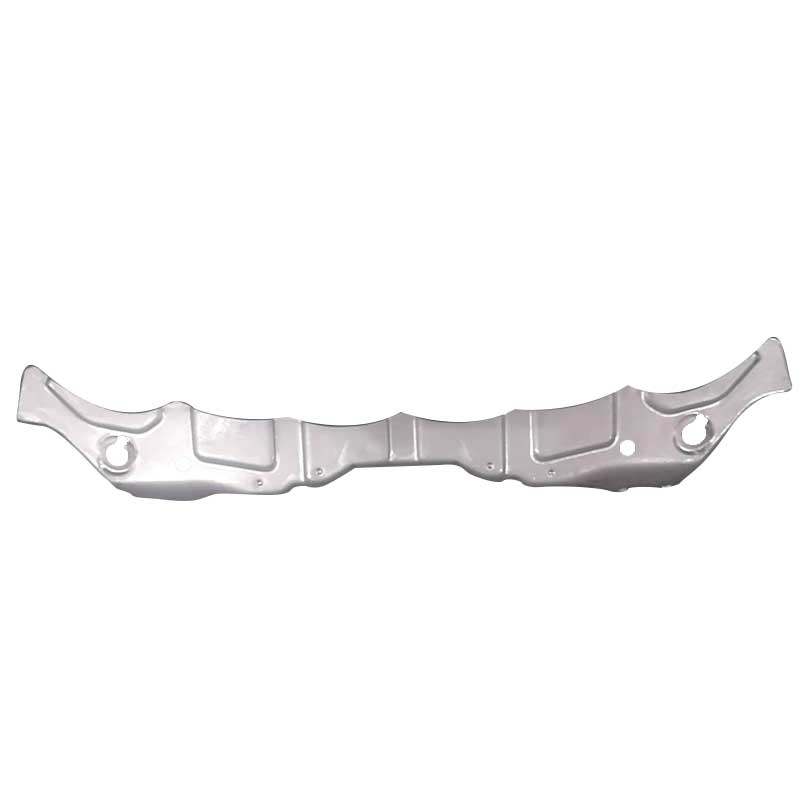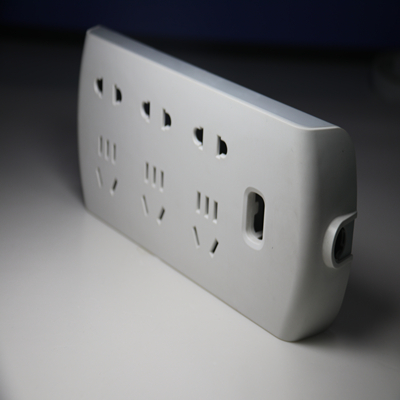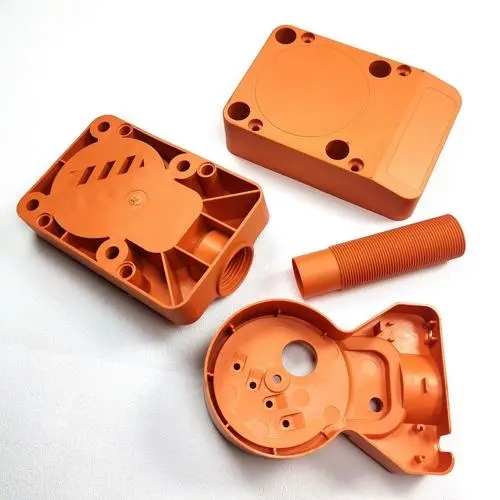toys Product Injection Molding
Thermoplastic Molding Products
There are many types of thermoplastics, and even the same type has different usage and process characteristics due to different ratios of resin molecules and additives. In addition, in order to change the characteristics of the original varieties, various chemical methods such as copolymerization and cross-linking are commonly used to introduce a certain percentage of other monomers or polymers into the original resin structure to change the structure of the original resin into a new one. Modified products that improve physical properties and processability. For example, ABS is a modified copolymer after the second and third monomers such as acrylonitrile and butadiene are introduced into the polystyrene molecule. It can be regarded as modified polystyrene and has better properties than polystyrene. Comprehensive performance, process characteristics. Due to the wide variety of thermoplastics and their complex properties, even the same type of plastic can be divided into injection molding and extrusion only.
1. Shrinkage rate
The form and calculation of the molding shrinkage of thermoplastic plastics are as mentioned above. The factors that affect the molding shrinkage of thermoplastic plastics are as follows:
1.1 Plastic types During the molding process of thermoplastic plastics, due to factors such as volume changes caused by crystallization, strong internal stress, large residual stress frozen in the plastic parts, strong molecular orientation, etc., compared with thermosetting plastics, the shrinkage rate is lower. It has a large shrinkage range and obvious directionality. In addition, the shrinkage after molding, annealing or humidity control treatment is generally larger than that of thermosetting plastics.
1.2 Characteristics of plastic parts When molding, the molten material contacts the surface of the cavity and the outer layer is immediately cooled to form a low-density solid shell. Due to the poor thermal conductivity of plastic, the inner layer of the plastic part cools slowly to form a high-density solid layer that shrinks greatly. Therefore, those with thick walls, slow cooling, and thick high-density layers will shrink more. In addition, the presence or absence of inserts and the layout and quantity of inserts directly affect the material flow direction, density distribution and shrinkage resistance. Therefore, the characteristics of plastic parts have a greater impact on shrinkage size and directionality.
1.3 Factors such as the form, size, and distribution of the feed inlet directly affect the material flow direction, density distribution, pressure-holding and shrinkage effect, and molding time. Direct feed inlets and feed inlets with large cross-sections (especially those with thicker sections) will have less shrinkage but greater directionality, while feed inlets with shorter width and length will have less directivity. Those close to the feed inlet or parallel to the direction of material flow will shrink more.
1.4 Molding conditions: The mold temperature is high, the molten material cools slowly, has high density, and shrinks greatly. Especially for crystalline materials, the shrinkage is greater due to high crystallinity and large volume changes. The mold temperature distribution is also related to the internal and external cooling and density uniformity of the plastic part, which directly affects the shrinkage and directionality of each part. In addition, the holding pressure and time also have a greater impact on shrinkage. If the pressure is high and the time is long, the shrinkage will be small but directional. The injection molding pressure is high, the viscosity difference of the molten material is small, the shear stress between layers is small, and the elastic rebound after demoulding is large, so the shrinkage can be appropriately reduced. The material temperature is high, the shrinkage is large, but the directionality is small. Therefore, adjusting various factors such as mold temperature, pressure, injection speed, and cooling time during molding can also appropriately change the shrinkage of the plastic part.
When designing the mold, based on the shrinkage range of various plastics, the wall thickness and shape of the plastic part, the size and distribution of the feed port, the shrinkage rate of each part of the plastic part is determined based on experience, and then the cavity size is calculated. For high-precision plastic parts and when it is difficult to control the shrinkage rate, it is generally advisable to use the following method to design the mold:
①Set a smaller shrinkage rate for the outer diameter of the plastic part and a larger shrinkage rate for the inner diameter to leave room for correction after mold testing.
② Trial mold to determine the form, size and molding conditions of the pouring system.
③ The dimensional changes of the plastic parts to be post-processed must be determined after post-processing (measurement must be done after 24 hours after demoulding).
④Correct the mold according to the actual shrinkage situation.
⑤Try the mold again and change the process conditions appropriately to slightly correct the shrinkage value to meet the requirements of the plastic part.
2. Liquidity
2.1 The fluidity of thermoplastic plastics can generally be analyzed from a series of indices such as molecular weight, melt index, Archimedean spiral flow length, apparent viscosity and flow ratio (flow length/plastic part wall thickness). Small molecular weight, wide molecular weight distribution, poor molecular structure regularity, high melt index, long spiral flow length, small apparent viscosity, and large flow ratio have good fluidity. For plastics with the same product name, you must check the instructions to determine whether the fluidity is suitable. For injection molding. According to the mold design requirements, the fluidity of commonly used plastics can be roughly divided into three categories:
① Good fluidity: nylon, polyethylene, polystyrene, polypropylene, cellulose acetate, poly(4) methylpentene;
② Medium fluidity: polystyrene series resin (such as ABS, AS), organic glass, polyformaldehyde, polyphenylene ether;
③Poor fluidity: polycarbonate, rigid polyvinyl chloride, polyphenylene ether, polysulfone, polyarylsulfone, fluoroplastics.
2.2 The fluidity of various plastics also changes due to various molding factors. The main influencing factors are as follows:
① Temperature The higher the material temperature, the greater the fluidity, but different plastics also have differences, such as polystyrene (especially impact-resistant and high MFR value), polypropylene, nylon, organic glass, modified polystyrene (such as The fluidity of plastics such as ABS, AS), polycarbonate, and cellulose acetate changes greatly with temperature. For polyethylene and polyformaldehyde, the temperature increase or decrease has little effect on their fluidity. Therefore, the former should adjust the temperature to control fluidity during molding.
② As the pressure of pressure injection molding increases, the molten material will be subject to greater shearing and the fluidity will also increase. In particular, polyethylene and polyformaldehyde are more sensitive, so the injection molding pressure should be adjusted during molding to control fluidity.
③The form, size, layout of the mold structure pouring system, cooling system design, molten material flow resistance (such as surface finish, feed channel section thickness, cavity shape, exhaust system) and other factors directly affect the flow of molten material in the cavity The actual fluidity within the material will reduce the fluidity if it causes the molten material to lower its temperature and increase the fluidity resistance. When designing the mold, a reasonable structure should be selected based on the fluidity of the plastic used. During molding, factors such as material temperature, mold temperature, injection pressure, and injection speed can also be controlled to appropriately adjust the filling situation to meet molding needs.
3. Crystallinity
Thermoplastic plastics can be divided into two categories: crystalline plastics and amorphous (also known as amorphous) plastics according to the fact that they do not crystallize when condensed.
The so-called crystallization phenomenon is that when the plastic changes from a molten state to a condensed state, the molecules move independently and are completely disordered, and the molecules stop moving freely and settle into a slightly fixed position, and there is a tendency for the molecules to be arranged into a regular model. phenomenon.
The appearance standard for distinguishing these two types of plastics depends on the transparency of thick-walled plastic parts. Generally, crystalline materials are opaque or translucent (such as polyformaldehyde, etc.), and amorphous materials are transparent (such as plexiglass, etc.) . However, there are exceptions. For example, poly(4)methylpentene is a crystalline plastic but has high transparency, and ABS is an amorphous material but is not transparent.
When designing molds and selecting injection molding machines, attention should be paid to the following requirements and precautions for crystalline plastics:
① It takes a lot of heat to raise the material temperature to the molding temperature, so equipment with large plasticizing capacity needs to be used.
② A large amount of heat is released during cooling and recovery, so it must be fully cooled.
③ The specific gravity difference between the molten state and the solid state is large, the molding shrinkage is large, and shrinkage holes and pores are prone to occur.
④ Fast cooling, low crystallinity, small shrinkage and high transparency. The degree of crystallinity is related to the wall thickness of the plastic part. The thicker the wall, the slower the cooling, the higher the crystallinity, the greater the shrinkage, and the better the physical properties. Therefore, the mold temperature of crystalline materials must be controlled as required.
⑤ Significant anisotropy and large internal stress. Uncrystallized molecules after demolding tend to continue to crystallize, are in a state of energy imbalance, and are prone to deformation and warping.
⑥ The crystallization temperature range is narrow, and it is easy for unmelted powder to be injected into the mold or block the feed port.
4. Heat-sensitive plastics and easily hydrolyzable plastics
4.1 Thermal sensitivity means that some plastics are more sensitive to heat. When heated at high temperatures for a long time or the cross-section of the feed opening is too small, or when the shearing force is large, the temperature of the material increases and it is prone to discoloration, degradation, and decomposition. This characteristic Plastics are called heat-sensitive plastics. Such as rigid polyvinyl chloride, polyvinylidene chloride, vinyl acetate copolymer, polyformaldehyde, polychlorotrifluoroethylene, etc. When heat-sensitive plastics decompose, they produce monomers, gases, solids and other by-products. In particular, some decomposition gases are irritating, corrosive or toxic to the human body, equipment and molds. Therefore, attention should be paid to mold design, injection molding machine selection and molding. A screw injection molding machine should be selected. The cross-section of the pouring system should be large. The mold and barrel should be chromium-plated. There should be no dead corners and stagnant materials. The molding temperature must be strictly controlled, and the amount of material added to the plastic must be strictly controlled. Stabilizer to weaken its heat-sensitive properties.
4.2 Even if some plastics (such as polycarbonate) contain a small amount of moisture, they will decompose under high temperature and high pressure. This property is called hydrolyzability, and it must be heated and dried in advance.
5. Stress cracking and melt fracture
5.1 Some plastics are sensitive to stress. They are prone to internal stress during molding and are brittle and easy to crack. Plastic parts will crack under the action of external forces or solvents. For this reason, in addition to adding additives to the raw materials to improve crack resistance, attention should be paid to drying the raw materials and reasonable selection of molding conditions to reduce internal stress and increase crack resistance. A reasonable plastic part shape should be selected, and inserts and other measures should not be installed to minimize stress concentration. When designing the mold, the demoulding slope should be increased, a reasonable feed inlet and ejection mechanism should be selected, and the material temperature, mold temperature, injection pressure and cooling time should be appropriately adjusted during molding to avoid demoulding when the plastic part is too cold and brittle. , after molding, the plastic parts should be post-processed to improve crack resistance, eliminate internal stress and prohibit contact with solvents.
5.2 When the polymer melt with a certain melt flow rate exceeds a certain value when passing through the nozzle hole at a constant temperature, obvious transverse cracks will occur on the melt surface, which is called melt rupture, which will damage the appearance and physical properties of the plastic part. Therefore, when selecting polymers with high melt flow rates, the cross-sections of the nozzle, runner, and feed inlet should be enlarged, the injection molding speed should be reduced, and the material temperature should be increased.
6. Thermal performance and cooling speed
6.1 Various plastics have different thermal properties such as specific heat, thermal conductivity, and heat distortion temperature. Plasticizing materials with high specific heat require a lot of heat, so an injection molding machine with large plasticizing capacity should be selected. Plastics with high thermal deformation temperature can have a short cooling time and early demoulding, but cooling deformation must be prevented after demoulding. Plastics with low thermal conductivity have a slow cooling rate (such as ionic polymers, etc., which have an extremely slow cooling rate), so they must be fully cooled and the mold cooling effect must be enhanced. Hot runner molds are suitable for plastics with low specific heat and high thermal conductivity. Plastics with high specific heat, low thermal conductivity, low thermal deformation temperature and slow cooling rate are not conducive to high-speed molding. An appropriate injection molding machine must be selected and mold cooling must be strengthened.
6.2 Various plastics require an appropriate cooling rate according to their type characteristics and shape of plastic parts. Therefore, the mold must be equipped with a heating and cooling system according to the molding requirements to maintain a certain mold temperature. When the material temperature increases the mold temperature, it should be cooled to prevent deformation of the plastic part after demoulding, shorten the molding cycle, and reduce the crystallinity. When the waste heat of the plastic is not enough to keep the mold at a certain temperature, the mold should be equipped with a heating system to keep the mold at a certain temperature to control the cooling rate, ensure fluidity, improve filling conditions or control the slow cooling of the plastic part. Prevent uneven cooling of thick-walled plastic parts inside and outside and increase crystallinity, etc. For those with good fluidity, large molding area and uneven material temperature, heating or cooling may need to be used alternately or both local heating and cooling may be used depending on the molding conditions of the plastic parts. For this purpose, the mold should be equipped with a corresponding cooling or heating system. The mold temperatures and thermal properties required for various plastic moldings are shown in Table 1-4 and Table 1-5.
7. Hygroscopicity
Because there are various additives in plastics, they have different degrees of affinity to moisture. Therefore, plastics can be roughly divided into two types: those that absorb moisture, those that adhere to moisture, and those that do not absorb water and are not easy to adhere to moisture. The moisture content in the material must be controlled within the allowable range. Otherwise, the water will turn into gas or hydrolyze under high temperature and high pressure, causing the resin to foam, reduce fluidity, and have poor appearance and mechanical properties. Therefore, hygroscopic plastics must be preheated using appropriate heating methods and specifications as required, and must be irradiated with infrared rays during use to prevent re-absorption of moisture.
PREVIOUS:plastic injection molding supplies NEXT:Period
Categories
Blog
Contact Us
Contact: plastic injection molding Company
Phone: +86 181 6575 9852
Tel: +86 755-27164277
E-mail: windward@seaiint.com
Add: Northwest of Huihao Industrial Park, No. 1, Chuangwei Road, Guangming District, Shenzhen







